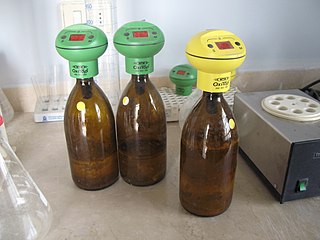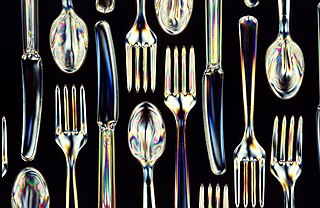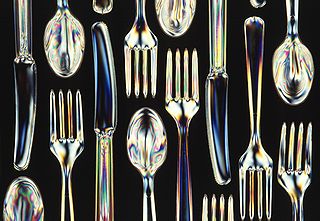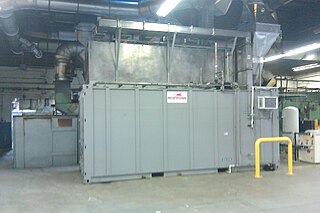Biodegradability prediction is biologically inspired computing and attempts to predict biodegradability of anthropogenic materials in the environment. Demand for biodegradability prediction is expected to increase with governments stepping up environmental regulations (see, for instance, testing for bioaccumulation in the REACH proposal).[ citation needed ]

Human impact on the environment or anthropogenic impact on the environment includes changes to biophysical environments and ecosystems, biodiversity, and natural resources caused directly or indirectly by humans, including global warming, environmental degradation, mass extinction and biodiversity loss, ecological crisis, and ecological collapse. Modifying the environment to fit the needs of society is causing severe effects, which become worse as the problem of human overpopulation continues. Some human activities that cause damage to the environment on a global scale include human reproduction, overconsumption, overexploitation, pollution, and deforestation, to name but a few. Some of the problems, including global warming and biodiversity loss pose an existential risk to the human race, and overpopulation causes those problems.

The natural environment encompasses all living and non-living things occurring naturally, meaning in this case not artificial. The term is most often applied to the Earth or some parts of Earth. This environment encompasses the interaction of all living species, climate, weather and natural resources that affect human survival and economic activity. The concept of the natural environment can be distinguished as components:
Bioaccumulation is the accumulation of substances, such as pesticides, or other chemicals in an organism. Bioaccumulation occurs when an organism absorbs a substance at a rate faster than that at which the substance is lost by catabolism and excretion. Thus, the longer the biological half-life of a toxic substance, the greater the risk of chronic poisoning, even if environmental levels of the toxin are not very high. Bioaccumulation, for example in fish, can be predicted by models. Hypotheses for molecular size cutoff criteria for use as bioaccumulation potential indicators are not supported by data. Biotransformation can strongly modify bioaccumulation of chemicals in an organism.
Contents
Example:
- Development of quantitative structure-activity relationship (QSARs) for biodegradation, for instance, biochemical oxygen demand for chemicals released into the environment with the aid of machine learning and other artificial intelligence methods. [1]
- The University of Minnesota Biocatalysis and Biodegradation Database (UM-BBD), which contains information on microbial biocatalytic reactions and biodegradation pathways for primarily xenobiotic, chemical compounds. One of its many features allows the prediction of microbial catabolic reactions using substructure searching, a rule-base, and atom-to-atom mapping.

Biodegradation is the breakdown of organic matter by microorganisms, such as bacteria, fungi.

Biochemical Oxygen Demand is the amount of dissolved oxygen needed by aerobic biological organisms to break down organic material present in a given water sample at certain temperature over a specific time period. The BOD value is most commonly expressed in milligrams of oxygen consumed per litre of sample during 5 days of incubation at 20 °C and is often used as a surrogate of the degree of organic pollution of water.

Machine learning (ML) is the scientific study of algorithms and statistical models that computer systems use to effectively perform a specific task without using explicit instructions, relying on patterns and inference instead. It is seen as a subset of artificial intelligence. Machine learning algorithms build a mathematical model of sample data, known as "training data", in order to make predictions or decisions without being explicitly programmed to perform the task. Machine learning algorithms are used in a wide variety of applications, such as email filtering, detection of network intruders, and computer vision, where it is infeasible to develop an algorithm of specific instructions for performing the task. Machine learning is closely related to computational statistics, which focuses on making predictions using computers. The study of mathematical optimization delivers methods, theory and application domains to the field of machine learning. Data mining is a field of study within machine learning, and focuses on exploratory data analysis through unsupervised learning. In its application across business problems, machine learning is also referred to as predictive analytics.







